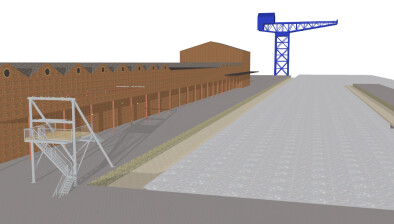And finally… Shark scales could inspire next generation of wind turbines
A study of shark skin conducted by a team of evolutionary biologists and engineers from Harvard University has led to a new structure that could one day improve the aerodynamic performance of planes, wind turbines, and cars.
The research, carried out in collaboration with the University of South Carolina, is published in the Journal of the Royal Society Interface.
“The skin of sharks is covered by thousands and thousands of small scales, or denticles, which vary in shape and size around the body,” said George Lauder, co-author of the research. “We know a lot about the structure of these denticles — which are very similar to human teeth — but the function has been debated.”
Most research has focused on how these denticles reduce drag, but the team instead looked at whether they might also be increasing lift. They used micro-CT scanning to create images of the denticles in three dimensions, and then 3D-printed them onto the surface of an airfoil.
“Airfoils are a primary component of all aerial devices,” said August Domel, co-first author of the paper. “We wanted to test these structures on airfoils as a way of measuring their effect on lift and drag for applications in the design of various aerial devices such as drones, airplanes, and wind turbines.”
The researchers tested 20 different configurations of denticle sizes, rows and row positions on airfoils inside a water flow tank. They found that in addition to reducing drag, the denticle-shaped structures significantly increased lift, acting as high-powered, low-profile vortex generators.
Vortex generators are used in cars and planes to alter the air flow over a moving object and make it more aerodynamic. “These shark-inspired vortex generators achieve lift-to-drag ratio improvements of up to 323 percent compared to an airfoil without vortex generators,” said Domel. “With these proof of concept designs, we’ve demonstrated that these bioinspired vortex generators have the potential to outperform traditional designs.”
Lauder added: “This research not only outlines a novel shape for vortex generators but also provides insight into the role of complex and potentially multifunctional shark denticles.”
















